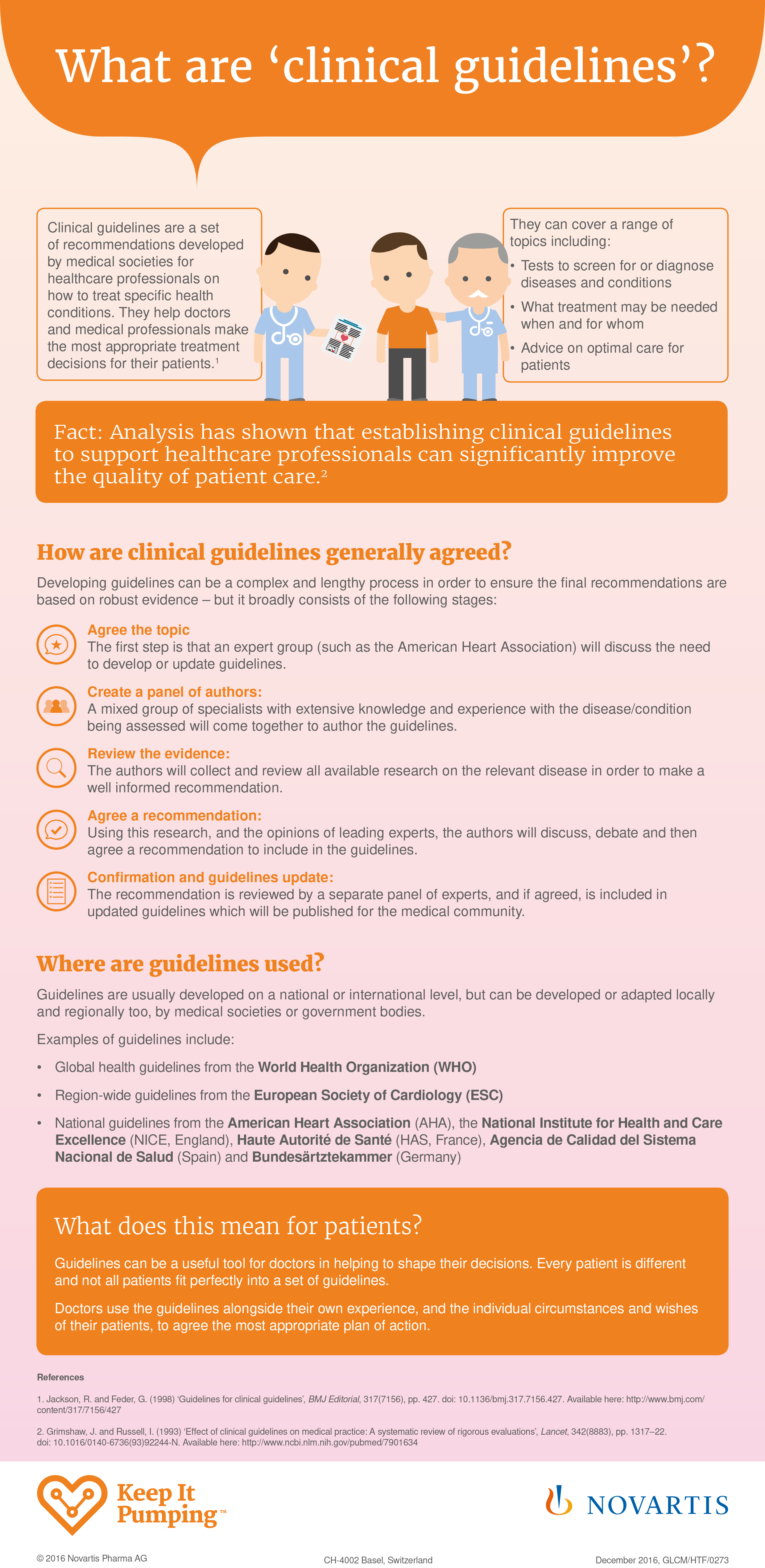
A quick guide to guidelines
There is a good chance that when you have spoken to a doctor or nurse about your heart failure, the advice they gave may have been informed by ‘clinical guidelines’. But what are clinical guidelines, who writes them and how are these recommendations agreed?
Explore the infographic below to find out more. As we learn more about heart failure it is only right that recommendations for how it is treated are updated in line with the latest thinking, research and knowledge.
This is why clinical guidelines are updated and new versions are published – for example last summer both the American Heart Association (AHA) and European Society of Cardiology (ESC), two leading organisations of experts in heart conditions, published updates to their guidelines to reflect the latest understanding of how best to diagnose, treat and manage heart failure.

To learn more about living with heart failure, or caring for someone with the condition, including top tips and advice, read our quick guide to living with heart failure or quick guide to caring for someone with heart failure.
1) Jackson, R. and Feder, G. (1998) ‘Guidelines for clinical guidelines’, BMJ Editorial, 317(7156), pp. 427. doi: 10.1136/bmj.317.7156.427. Available here: http://www.bmj.com/content/317/7156/427
2) Grimshaw, J. and Russell, I. (1993) ‘Effect of clinical guidelines on medical practice: A systematic review of rigorous evaluations’, Lancet, 342(8883), pp. 1317–22. doi: 10.1016/0140-6736(93)92244-N. Available here: http://www.ncbi.nlm.nih.gov/pubmed/7901634





